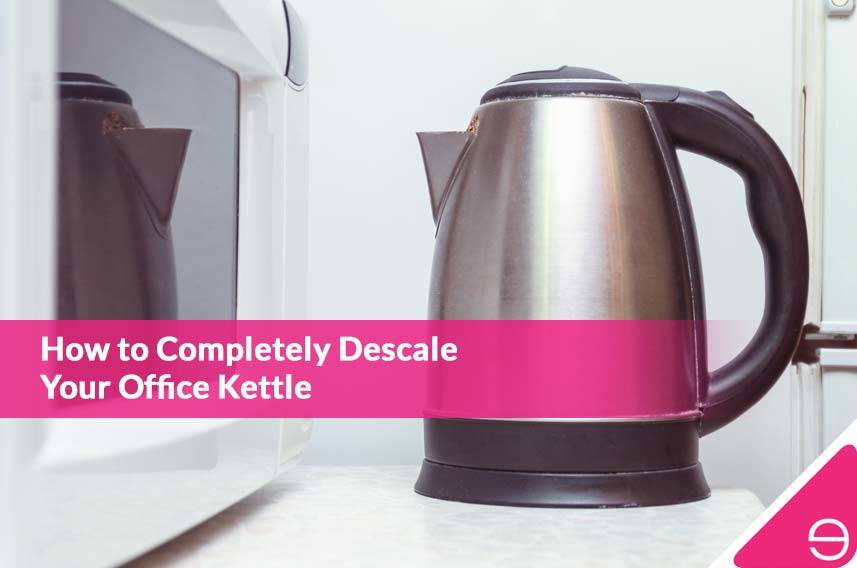How many times per day do you switch on your kettle to make a cup of tea or coffee at work?
If you think about it, your office kettle probably gets used several dozen times a day and with each use, the kettle builds up limescale and other deposits.
After each drink, it’s fairly routine of us to clean our mugs and spoons yet, in the case of the kettle we don’t even think about this.
As a result, limescale starts to build up especially in areas with hard water.
You may not consider this an important issue at work, but it is useful to know how to descale your office kettle.
This will help to prolong the life of the kettle and prevent that nasty build up of scale that leads to unsightly discoloured cups of teas and flakes that are very unpleasant to drink.
Removing limescale from your office kettle every couple of months is highly recommended.
So in this article, we discuss what causes limescale build up and how to clean a kettle quickly and effectively to ensure your office kettle remains scale free and makes the perfect cuppa!
Read on to discover more, or use one of the jump links below to skip to a section of your choice:
Chapters
- What is Limescale?
- Using Natural Products
- Using Store Bought Products
- Hints & Tips
- Limescale Prevention
- Conclusions
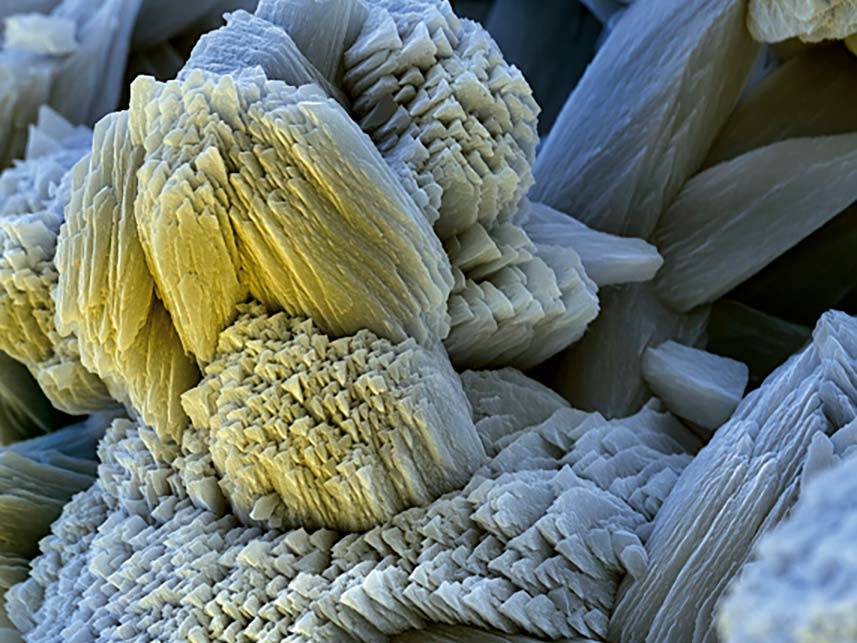
1. What is Limescale?
Limescale, or calcium carbonate as it is more accurately referred to , is essentially the deposit that is left behind when hot water evaporates, and the residue solidifies.
This white deposit is rough in texture, and quite unsightly.
It is normally found in kettles as well as in hot water tanks and central heating systems.
When discovered, the first thing that will come to mind is to try to scrub away at the limescale, however this is not a practical solution to removing it.
Limescale is not easy to remove by simple scrubbing and if you scrub too hard, the inner surface or the heating element in the kettle may get damaged in the process.
To remove limescale, it’s best to use more specific cleaning methods, which are discussed below.
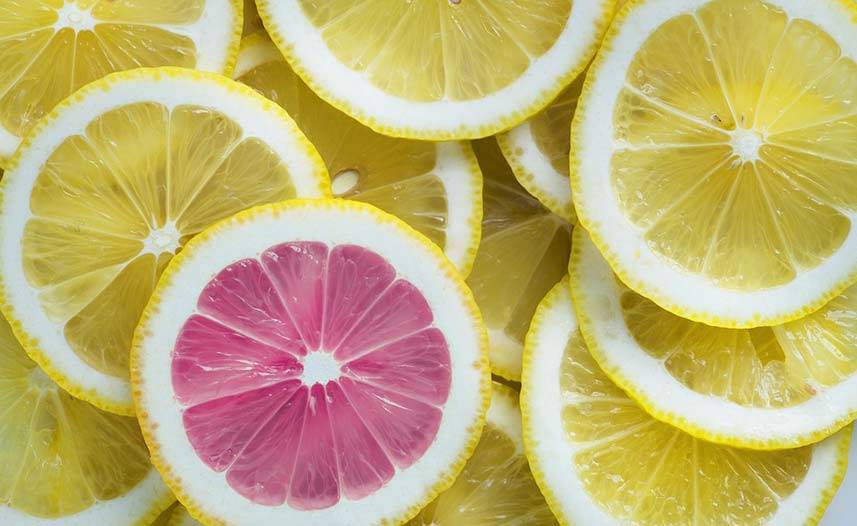
2. Using Natural Products
You can descale your office kettle using natural products that can be found at work, home or the local store.
A popular method is the following, using household vinegar or lemon juice:
- Start by filling the kettle with a solution made up from equal parts of water and vinegar. It is best that the kettle is at least half full.
- Let it soak in the kettle for at least an hour. If the limescale buildup is considerable you may wish to leave it inside it to soak well overnight. This will give enough chance for the solution to disintegrate the mineral deposits in the kettle. In cases where the kettle has a filter, it’s best to remove it and allow it to soak separately.
- Then, switch on the kettle and let it boil for a couple of minutes.
- After, empty the kettle and rinse well. It is best to use cold water for rinsing.
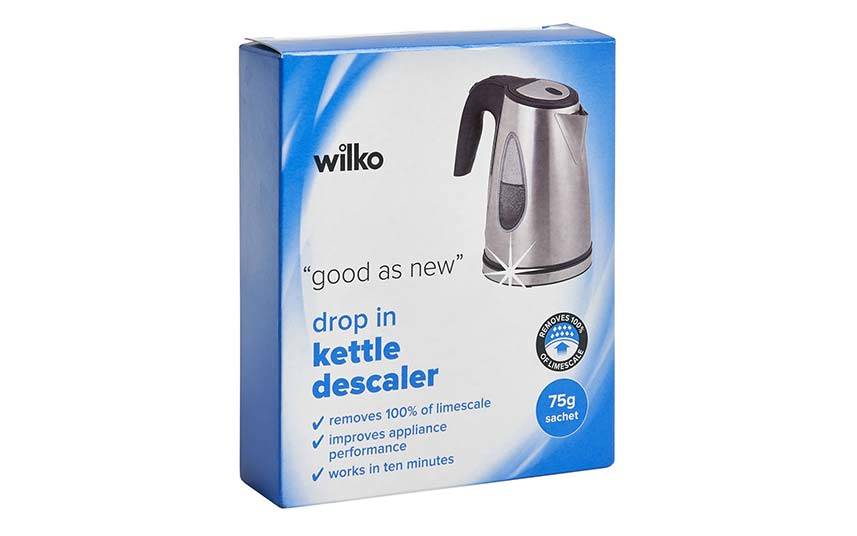
3. Using Store Bought Products
Descaling a kettle can also be done by using store bought products.
There are kettle cleaning products which can be found that claim to take care of the descaling effectively.
These may be found in various forms including powder, liquid as well as gels.
Make sure to read the instructions on the label of these products, but generally you will need to do the following:
- The kettle cleaning product will need to be diluted in some water.
- Then pour it in the kettle.
- Switch it on and allow it to boil for some time.
- Allow the solution to sit inside the kettle for a period which will be specified on the product’s packaging so that it will soak well and descale it properly.
- Once the time is up, rinse out the kettle well.

4. Hints & Tips
As you can see, descaling your office kettle is not particularly difficult or demanding and it only takes a few minutes.
If you carry out this simple process every couple of months, you’ll ensure that every cup of tea or coffee you make is free from undesirable particles resulting from the accumulated limescale inside the kettle.
You’ll also be very popular at the office for sure!
Here are some helpful tips that you should bear in mind:
- When you descale the kettle, it is best that you boil some water, once or twice, and do not use it to drink. This is intended to neutralise the smell that may be left after the descaling process, since both lemon and vinegar may leave some smell as well as taste. The same applies to store bought products. This will also help to clean away any residues.
- If the kettle has an external heating element, it is recommended that you sprinkle some bicarbonate soda mixed with lemon, and scrub away the white accumulations that are often found at the bottom. Never scrub away with bicarbonate soda on internal heating elements as this will end up removing their protective coating.
- Natural descaling procedures are preferred since they are free from any chemicals, unlike store bought products. If you still opt for a store bought descaling product, make sure to check the labels. There are some products that can be trusted as their formula is specially designed to ensure safety once the kettle is used afterwards.
- Juice from lemons is not as effective as store bought lemon juice or vinegar if the limescale buildup is substantial.
- Never use bleach to clean kettles.
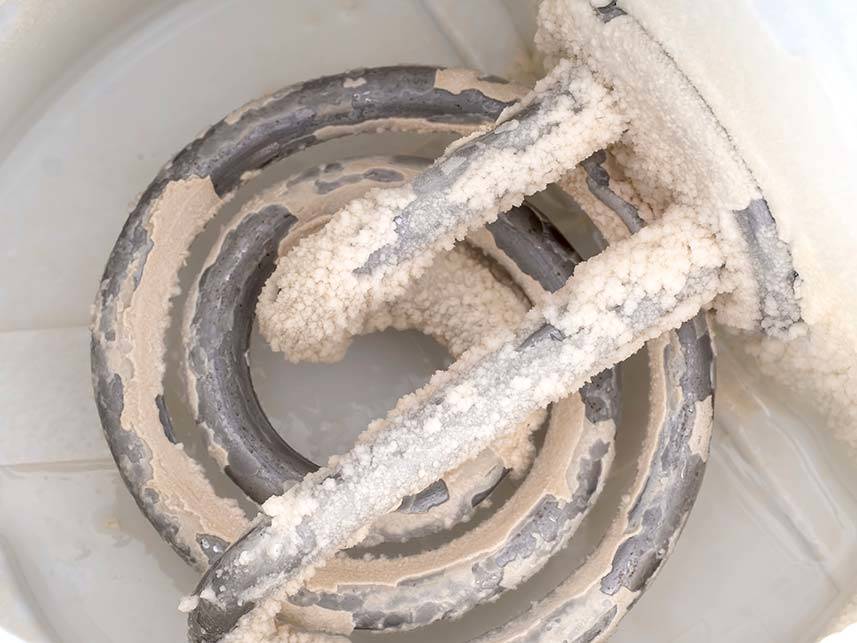
5. Limescale Prevention
Whilst it’s useful to know how to completely descale an office kettle, it’s best if the limescale buildup is not unmanageable.
So, here’s some tips which can help you reduce the limescale build up in your kettle and prevent you from having to descale it all too often:
- You may wish to invest in a limescale catcher. These are basically metallic balls which attract mineral deposits to them instead of allowing them to buildup in the kettle.
- Try to make it a point to clean the inside of the kettle periodically, say once monthly. In such a way the buildup will be small and easier to remove.
- Avoid leaving water inside the kettle. Any unused water should be emptied away not left to stand inside the kettle unnecessarily for hours.
Conclusions
Limescale removal from a kettle is a very straightforward task.
You can do it quickly, effortlessly and without spending too much money, since it can easily be done with lemons or vinegar!
Your kettle will not only be safer and cleaner to use, but descaling will also help it to last longer too.
And of course, those all important cups of tea or coffee will taste far nicer with a clean descaled kettle.


